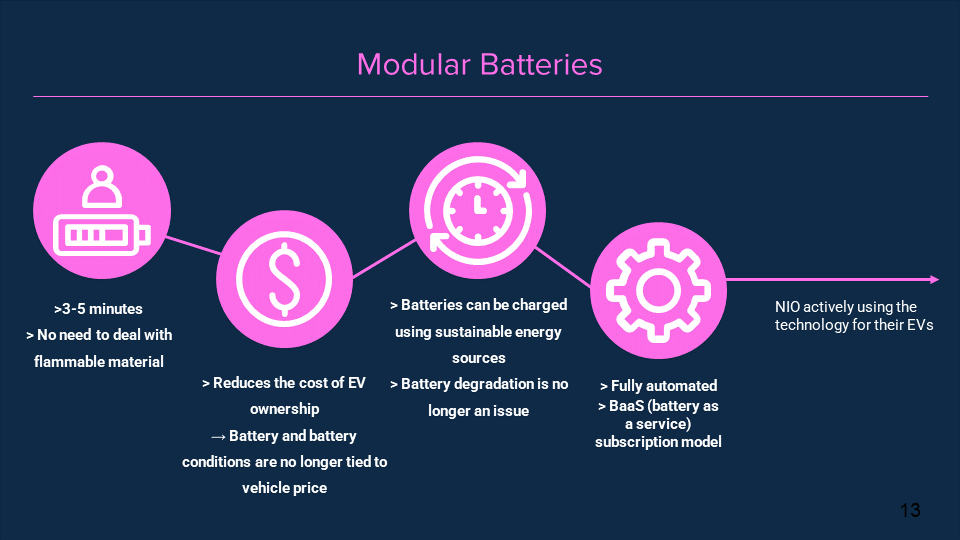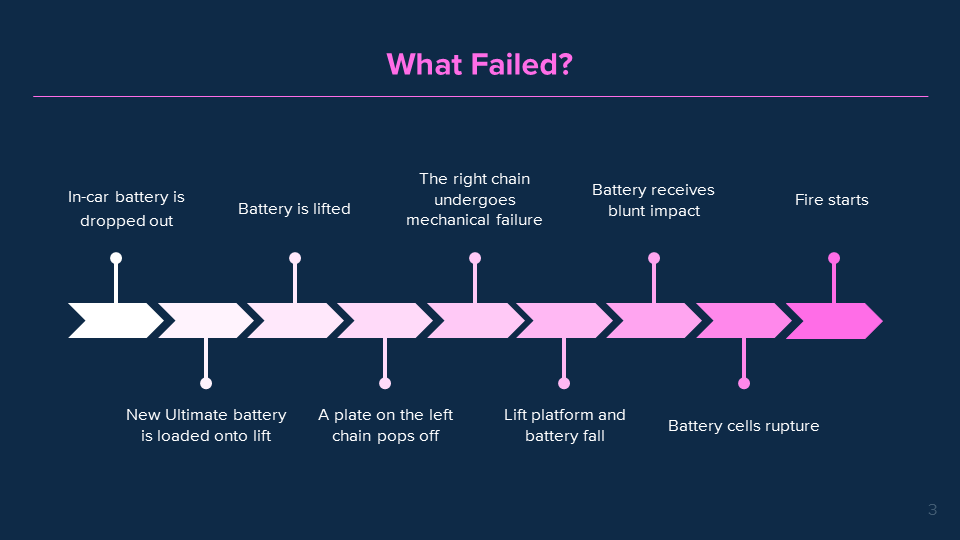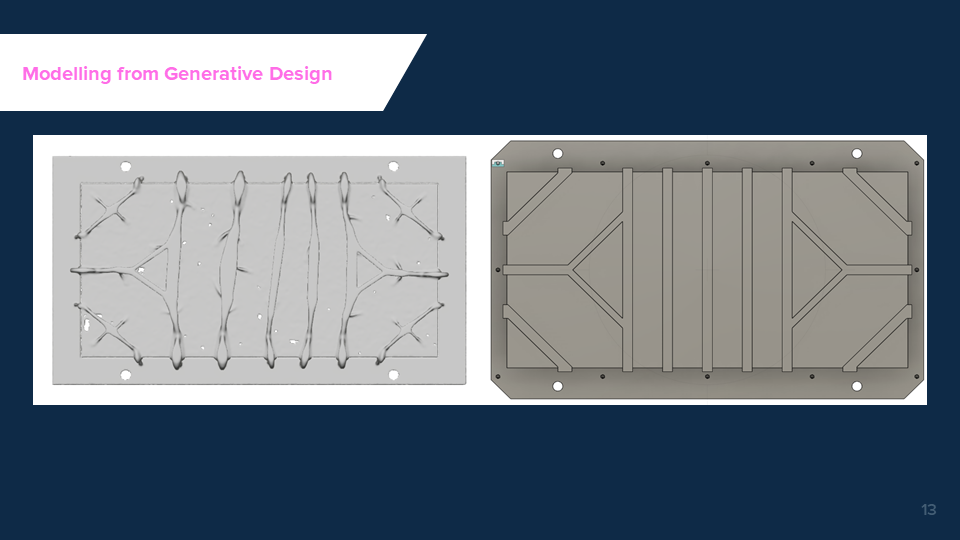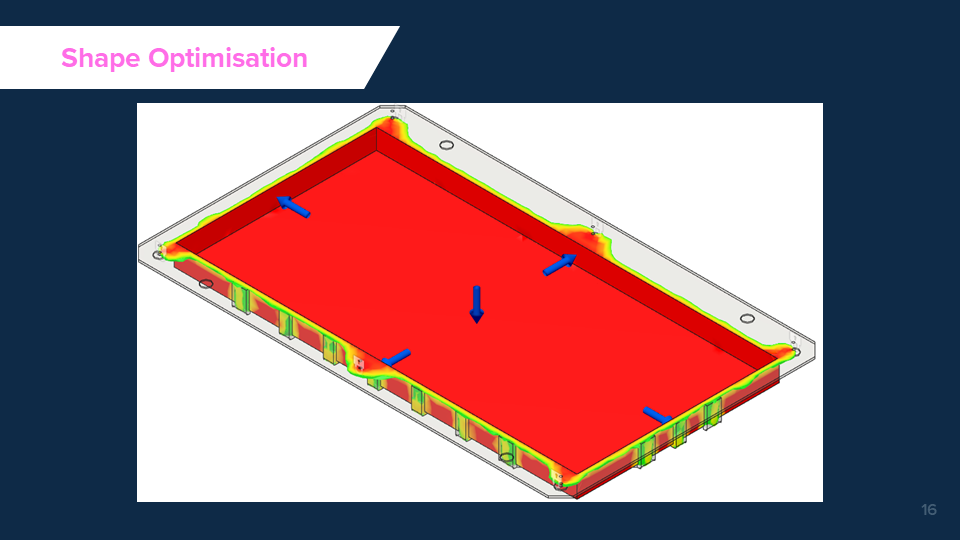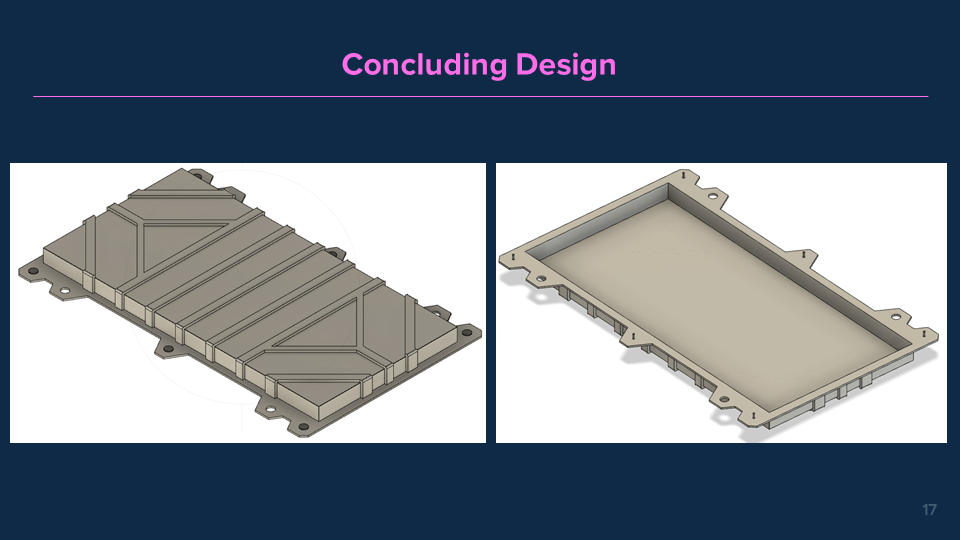Academic Projects
Year 2 Scenarios Projects
MECH0016 Mechanical Engineering UCL
Split into four related projects over the course of two terms, Year 2 Scenarios challenged us in groups to think and solve problems as engineers. Taking real world problems and tackling them in a week threw us into the deep end and gave me insight into how engineering problems are approached in real life.
scenarios 1
Engineering study of replacing EV chargers with alternative energisation methods - group 27
This Scenario focused on Problem Definition and Conceptual Design. Specifically, we were asked to assess which electric vehicle technologies would be best suited for an EV company looking to the future.
I investigated and prepared a case for modular batteries. I found that they drastically reduce effective charging times, subsequently reducing the cost of EV ownership. I also assessed their environmental impact focusing on charging, maintenance and longevity. I also conducted market research, looking at NIO’s economic model, who offer modular batteries on a subscription model.
The next step was to create a decision matrix of my team’s researched technologies. I demonstrated teamwork by collating relevant information from my research and presenting this to the group. I also participated in ranking each technology contextually in the decision matrix.
Finally, we presented our engineering thought process and final solution to a panel of professors, electing to choose modular batteries as the technology to invest in.
Grade achieved: 83.17%
Feedback from panel: “good presentation and understanding, nice intro, presentation was good, first group to consider accessibility of tech by different groups, questions were answered with a good amount of detail, poster is very good.”
scenarios 2
Forensic engineers - group 27
This Scenario focused on Forensic Engineering. We were tasked to find out who was at fault for a battery swap malfunction – suppliers, installers, manufacturers, user errors etc.
I focused on assessing the chain of events and what lead to the malfunction. Analysing a variety of reports of the incident, technical manuals, eyewitness statements and more, I successfully created a timeline of events leading up to the failure. I was also responsible for analysing the legal aspect of the incident, assessing that fraud and negligence had taken part on part of the installation and maintenance team.
My research was presented to my team and was used to inform our strategy on how the incident could have been avoided. A new, safer design was also drawn up from my research into the mechanical failure of the lift system.
Presenting to the panel, we scored well. However, there were some areas of improvement, namely as engineers we should not assign liability to parties.
Grade achieved: 65.1%
Feedback from professors: “managed to get correct sequence of events, some good points considered for legal issues, however, as engineer experts we should not assign liability, rather let the courts decide. Generally good risk assessment, good design critique.”
Presentation Video
scenarios 3
Battery tray - group 27
This Scenario focused on the design process for a modular electric vehicle battery tray. Specifically, looking at how engineers would use Function, Objective, Constraints, a Product Design Specification, and applying those to a design in CAD and iterating using FEA.
I was responsible for realising our design in CAD. The software I used was Autodesk Fusion 360. I used data from my team to setup a generative design simulation to aid the design process, which can be seen in the slide. I used preserve and block geometries to ensure my design would allow fitment of the battery, bolt holes and guide pins. The simulation yielded a rib structure as shown, which I used as inspiration for a manufacturable version.
After this first prototype, I used static stress simulations to test the mechanical characteristics of the tray. I then started using shape optimisation algorithms based on stress analysis. After 40 or so iterations, I successfully achieved the quantitative mechanical characteristics set out in our PDS for safety factor, max displacement etc.
The design proved to be strong, scoring highly from our panel of professors.
Grade achieved: 83.6%
Feedback from panel: “Ribbed case looks very good. It’s like something that you would see in the real world! Brilliant presentation skills from Hasha, consider science communications as a career! Very good design – looks great. “
“Good final design. Good design process. Really good final design. Very good design – good material choice. Ribs on the battery seating face for stiffness. Lightweight”
scenarios 4
Bracket Design for Manufacture - group 27
This Scenario focused on designing components for manufacture. We were tasked to create an angle bracket with the main performance criteria being how lightweight we can make the component.
I was responsible for the mechanical design of the component, including the generative design and subsequent model. The generative design prototype showed that a lot of material can be removed from the bracket but of course, such a design is unmanufacturable. I then created an inspired model given the manufacturing constraints – 3-axis machining from billet material.
I managed to fulfil all the design requirements of the design bracket whilst achieving a low weight. The final design can be seen in the slide. This design was then handed off to the manufacturing simulation team who successfully were able to create G-Code to manufacture the bracket from a billet of material.
My team scored highly and were praised for our weight saving design and simulation depth.
Grade achieved: 81%
Feedback from panel: “Great vice inclusion and billet choice. Nice design with good weight saving underneath. Added vice into simulation.”
Presentation Video
Simulation of final pass on bracket milling
